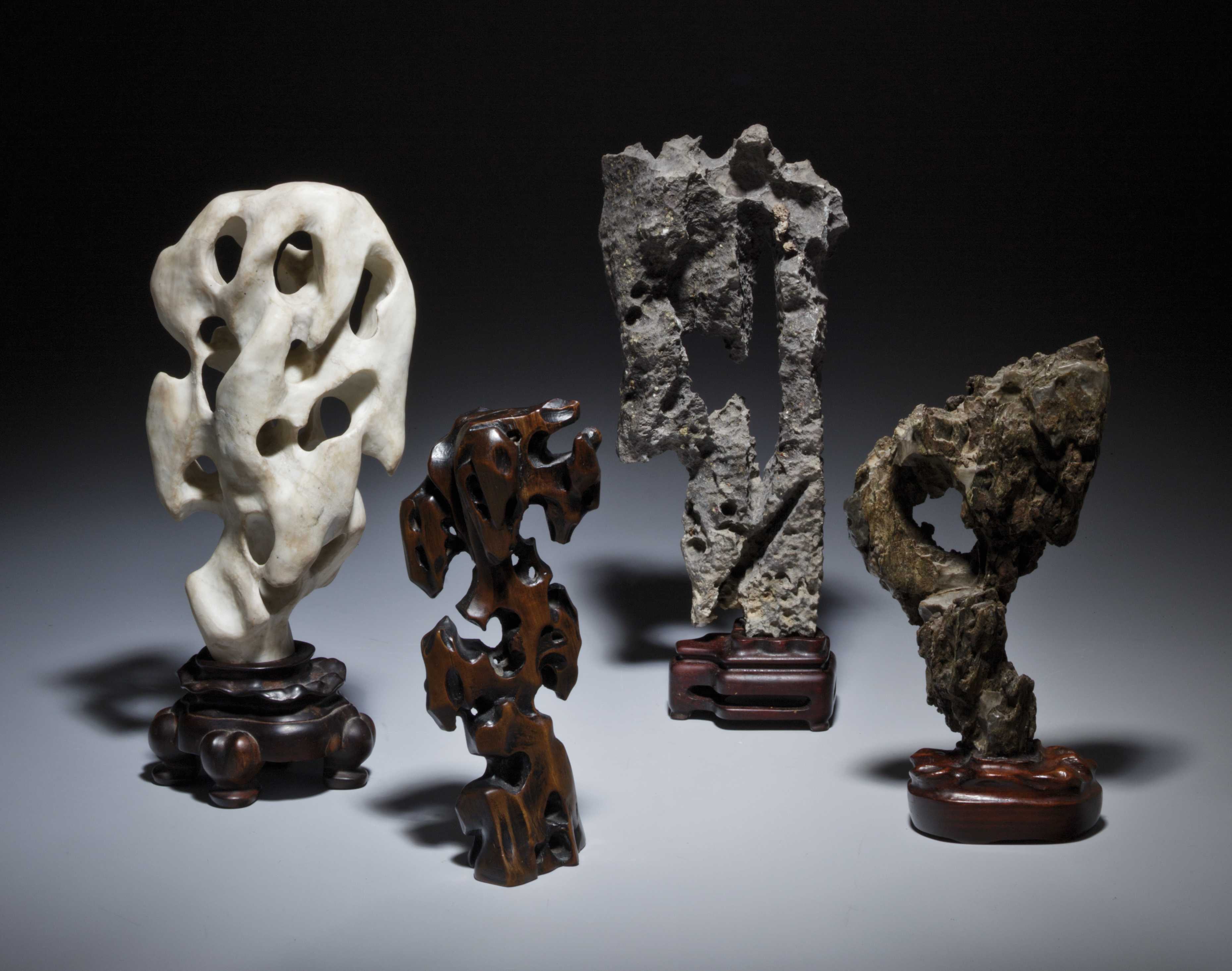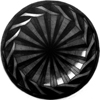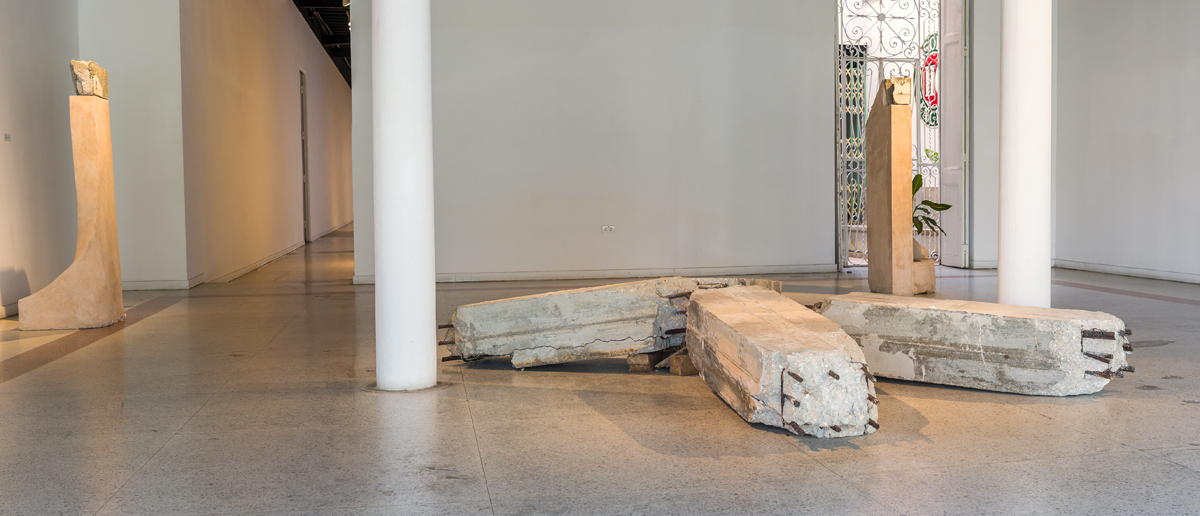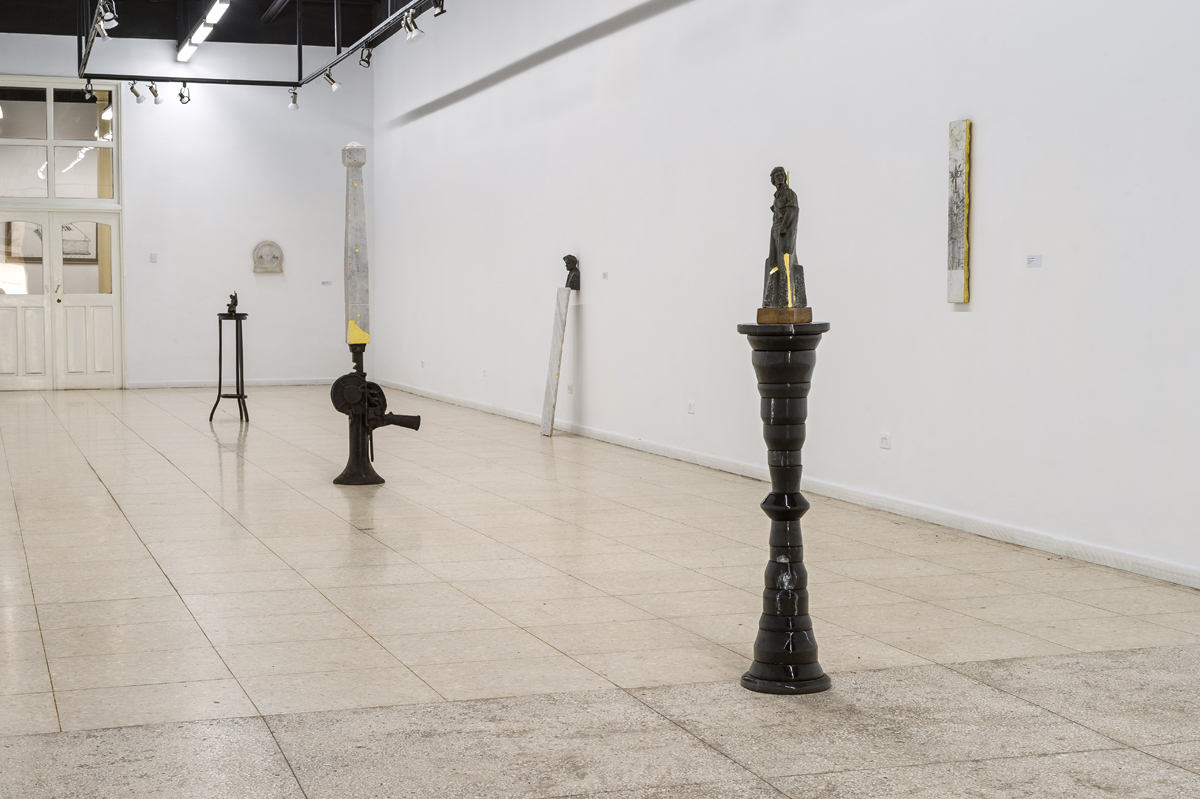Formas del tiempo (The condition of time) by Jasmine Chohan
General view
The condition of time traces Glexis Novoa’s exploration of sculpture and space. Composed of works on marble and concrete, through the exhibition, the artist captures age-old fascinations with stone, spirituality and stories.
Novoa’s interest in Eastern cultures is well documented. A practising Buddhist, the artist’s spiritual connection with a far-flung culture seeps into every element of his life and work. The condition of time is based on those interests and specifically the Buddhist philosophies of Rupa and Sunyata. Connecting to the title of the exhibition, Rupa is used to describe both spiritual and material impermanent form. Sunyata is the belief in emptiness, an emptiness that is reached through the loss of one’s ego and self, often attained through deep meditation. Both link together through the notion of formlessness, a condition that time forces upon us all. Novoa uses fragments of discarded marble and concrete, images of people lost to history and objects left behind by unknown faces to create an impression of melancholically tangible formlessness.
 Gongshi, better known as scholar’s rocks.
Gongshi, better known as scholar’s rocks.
Having curated and come up with the premise of the show, Novoa explains that his use of stone is inspired by Gongshi. Better known as scholar’s rocks, the colloquial term for Gongshi is also spirit stones. Gongshi is part of the rich and ancient Chinese visual culture. For centuries artists, poets and philosophers gained inspiration from porous, wrangled rock. Scholar’s rocks were defined as natural replicas of vast landscapes, formed in the crevices of the earth. Utilised as tools for meditation, the rocks were microcosmic representations of the universe. Novoa has taken this premise and applied it to his object of meditation—humanity. Through a literal projection of the artist’s imagination onto the rock forms, Novoa creates replicas of cityscapes, landmark buildings and portraits that track human movement through history in both utopic and dystopic formats. The stones themselves are also forged by human hands as opposed to nature. Often being discarded fragments from disintegrated buildings, the process of finding, restoring and reimagining the marble and concrete pieces becomes an archaeological act for Novoa. The artist recreates a material history and form around the object and then recycles it by projecting his microcosmic representation of the universe upon the stone.
Ramón Rivera en la 7ma avenida de New York 1923 2019 graphite on marble, 23K gold leaf; 17 x 42 x 2 centimeters
The exhibition shows works that vary from minuscule illustrations executed by drawing through a magnifying glass onto pillars of stone, to large format portraits on intimate slabs of marble. Regardless of the format or size, each drawing contains an almost mathematical precision—each line captures a sense of perfection. Novoa’s act of drawing in such fine detail can be seen as a form of meditation in and of itself. By achieving a meditative state, one is supposed to be aware of the smallest sensations, the little things. Novoa’s draughtsmanship allows him to capture those fleeting flickers and lines with extraordinary exactness. By reducing the size of a city to a coin on a vast mass of stone, the artist asks the audience to explore what space means to them. The fragments can be walked around, studied up close and passed fleetingly, reflecting the inconsequential nature of material form. No trace of the human spirit can be seen in those vast structures, reduced to a fly on the wall. Comparatively, the audience is confronted with intimate portraits of faded personas, whose presence lingers on through the objects and images left behind. Novoa affectionately captures people displaced by time as if they were close family or friends. By doing so, the artist reminds us that although the physical form has been abandoned, a spirit and memory survives.
In The condition of time, Novoa focuses on a story of movement, upheaval and migration. The objects and photographs on display hark back to a time when due to political or economic changes people migrated towards the North and from there to all parts of the world. This exhibition traces the roots of the dispersion and captures a moment in time when lives were abandoned and recreated, where a generation encompassed the essence of abandoning form and the self on multiple occasions only to recreate and recycle parts, much like Novoa does with the pieces he works with.
It is an inescapable fact that Novoa’s work has been conditioned by his migratory experience, his social context, his life between three worlds. Cuba has absorbed Western cultures, “Third World” cultures and, although the second world has often been relegated to the history books, Novoa lived through the experience of Soviet cultural influence. All three experiences can be seen in every image the artist has produced. Be it through capturing colonial or brutalist architecture, working with beautiful yet, to most, incomprehensible Cyrillic lettering and Soviet symbols, or through imbuing works with Eastern philosophies; each work gives form to the artist’s formless spirit.
– Jasmine Chohan (art historian), London 2019
- Photo: Ricardo Elias



